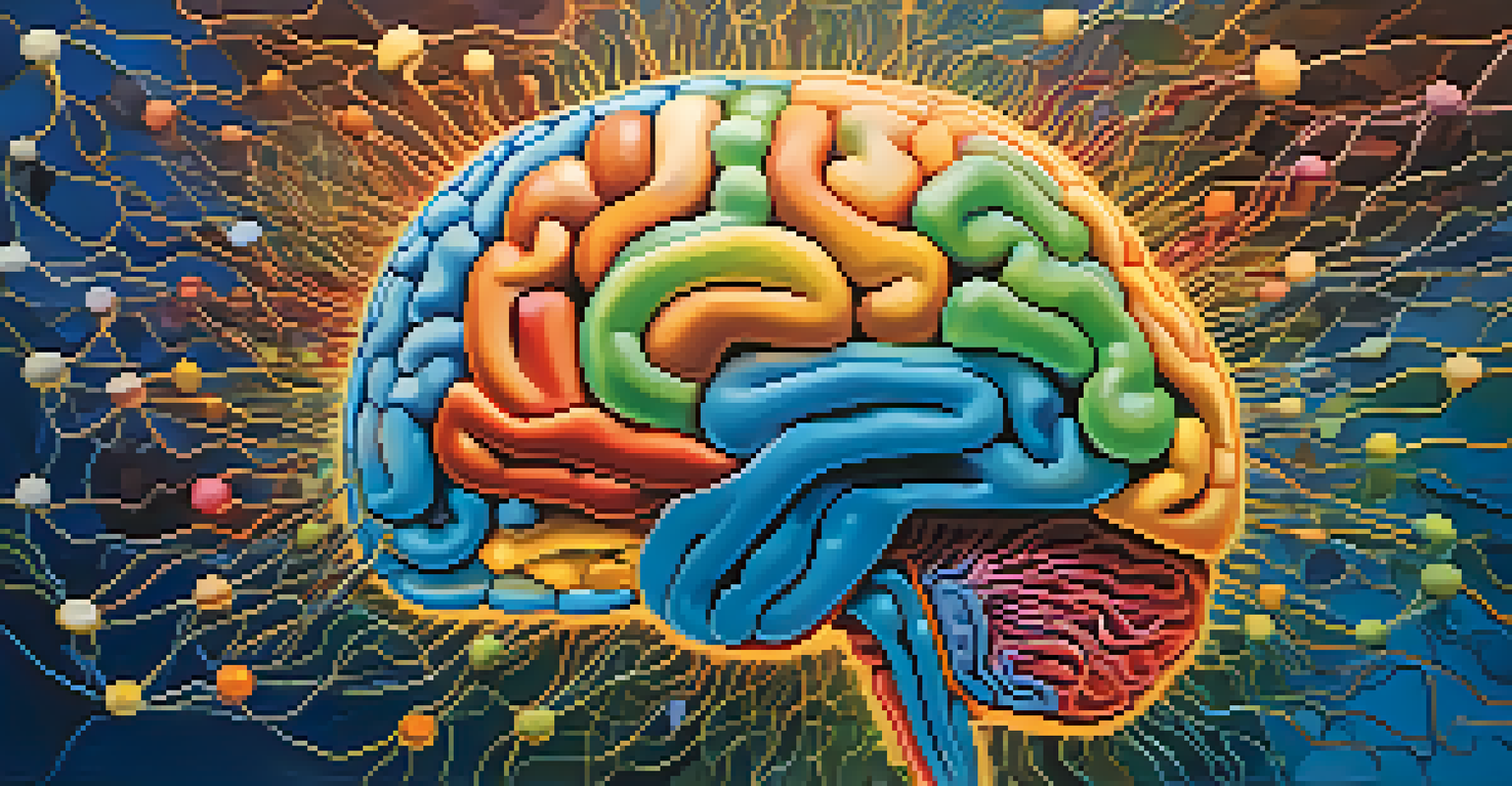Exploring Ayahuasca's Impact on Neuroplasticity and Healing

What is Ayahuasca and Its Cultural Roots?
Ayahuasca is a traditional Amazonian brew made from the Banisteriopsis caapi vine and other plants. This powerful concoction has been used for centuries by indigenous tribes for spiritual rituals and healing practices. It’s not just a drink; it’s a gateway to profound personal insights and emotional healing, deeply rooted in the cultures of the Amazon basin.
The experience of Ayahuasca can lead to profound personal insights and emotional healing.
The experience often involves consuming the brew in a ceremonial setting, guided by a shaman or facilitator. These ceremonies are designed to create a safe space for participants to explore their consciousness and connect with their deeper selves. This cultural significance adds layers of meaning to the experience, making it more than just a substance; it’s a holistic journey.
As we dive into the science behind Ayahuasca, it’s essential to acknowledge these cultural roots. Understanding the historical context helps us appreciate how this ancient practice has evolved and its relevance in today’s therapeutic landscape.
The Science of Neuroplasticity Explained
Neuroplasticity refers to the brain's remarkable ability to change and adapt throughout our lives. This includes forming new neural connections in response to learning, experience, and even injury. Think of it like a road system: when a road gets blocked, new pathways can be created to keep traffic flowing, ensuring that information can still reach its destination.

This adaptability is crucial for recovery from trauma and mental health conditions. By promoting new connections and pathways in the brain, neuroplasticity allows individuals to overcome challenges and reshape their thought patterns. It’s a hopeful concept, suggesting that our brains are not fixed but rather dynamic and responsive.
Ayahuasca’s Cultural Significance
Ayahuasca is a traditional Amazonian brew used for centuries in spiritual rituals and healing practices, offering profound personal insights.
Recent research has highlighted the role of various substances, including psychedelics, in enhancing neuroplasticity. This is where Ayahuasca comes into play, potentially offering therapeutic benefits by facilitating these brain changes during its profound experiences.
How Ayahuasca Influences Neuroplasticity
Studies suggest that Ayahuasca can stimulate neuroplasticity through its active compounds, primarily DMT (dimethyltryptamine) and harmine. DMT is a powerful psychedelic that can alter perception and consciousness, while harmine is known to inhibit certain enzymes that break down neurotransmitters. Together, they create a unique environment in the brain that encourages growth and change.
Neuroplasticity allows individuals to overcome challenges and reshape their thought patterns.
During an Ayahuasca ceremony, participants often report intense emotional experiences and insights that can lead to significant shifts in perspective. These experiences may enhance neuroplasticity by fostering new ways of thinking and coping with emotions. In essence, Ayahuasca may help 'rewire' the brain, offering a fresh start for those struggling with entrenched patterns.
This process is not instantaneous; rather, it can take time for the effects of neuroplasticity to manifest in daily life. However, the potential for long-lasting change is a compelling aspect of Ayahuasca’s impact on mental health and personal growth.
Ayahuasca and Mental Health Recovery
Many individuals turn to Ayahuasca in hopes of addressing mental health issues such as depression, anxiety, and PTSD. The ceremonial experience can provide a unique opportunity to confront and process difficult emotions and traumas. This can be particularly transformative for those who feel stuck in their healing journey.
Research indicates that Ayahuasca may lead to meaningful reductions in symptoms of mental health disorders. By promoting neuroplasticity, it allows individuals to break free from negative thought patterns and develop healthier coping mechanisms. It’s as if Ayahuasca offers a reset button for the brain, providing a chance to start anew.
Neuroplasticity and Healing
The brew's active compounds may enhance neuroplasticity, allowing individuals to reshape thought patterns and promote mental health recovery.
However, it’s essential to approach Ayahuasca with caution. It’s not a cure-all, and its effects can vary widely from person to person. Ensuring a safe, supportive environment and having qualified guidance is crucial for those considering this path.
The Therapeutic Potential of Ayahuasca
The therapeutic potential of Ayahuasca extends beyond just individual healing; it could reshape mental health treatment as a whole. As more research emerges, therapists and practitioners are exploring how Ayahuasca can be integrated into traditional therapeutic frameworks. This could lead to innovative approaches that combine ancient wisdom with modern psychology.
Imagine a therapy session where the insights gained during an Ayahuasca experience inform the therapeutic process. This integration could facilitate deeper discussions, helping clients navigate their emotions and experiences with renewed clarity. The combination of psychedelic experiences with psychotherapy may unlock new pathways for healing.
While the idea of integrating Ayahuasca into therapy is exciting, it’s still in its early stages. Continued research and open dialogue are necessary to understand how best to incorporate these practices safely and effectively.
Challenges and Considerations
Despite its potential benefits, there are challenges and considerations when it comes to Ayahuasca. For one, the experience can be intense and overwhelming, leading to feelings of anxiety or discomfort. It’s crucial for participants to be mentally and emotionally prepared for the journey ahead, as it can bring unresolved issues to the surface.
Moreover, the legality and accessibility of Ayahuasca can vary greatly depending on where you are. In some countries, it’s embraced and celebrated; in others, it may be restricted or illegal. This adds another layer of complexity for those interested in exploring its healing properties.
Potential in Modern Therapy
As research evolves, Ayahuasca could be integrated into therapeutic frameworks, potentially revolutionizing mental health treatment.
Lastly, it’s important to remember that Ayahuasca is not a substitute for professional mental health care. It should be viewed as a complementary approach rather than a standalone solution. Careful consideration and professional guidance are key to ensuring a safe and effective experience.
Conclusion: The Future of Ayahuasca in Healing
As we continue to explore the impact of Ayahuasca on neuroplasticity and healing, the future looks promising. The intersection of ancient practices and modern science opens new avenues for understanding how this unique brew can support mental health. With ongoing research, we may uncover more about its therapeutic potential and how it can benefit those in need.
The journey of exploring Ayahuasca is not just about the drink itself but the experiences and transformations that come from it. Each person's path is unique, and what works for one may not work for another. However, the collective insights and stories emerging from this field are paving the way for a deeper understanding of healing.

In conclusion, Ayahuasca represents more than just a cultural artifact; it’s a beacon of hope for many seeking healing and transformation. As we broaden our understanding, it’s essential to approach this journey with respect, mindfulness, and an open heart.